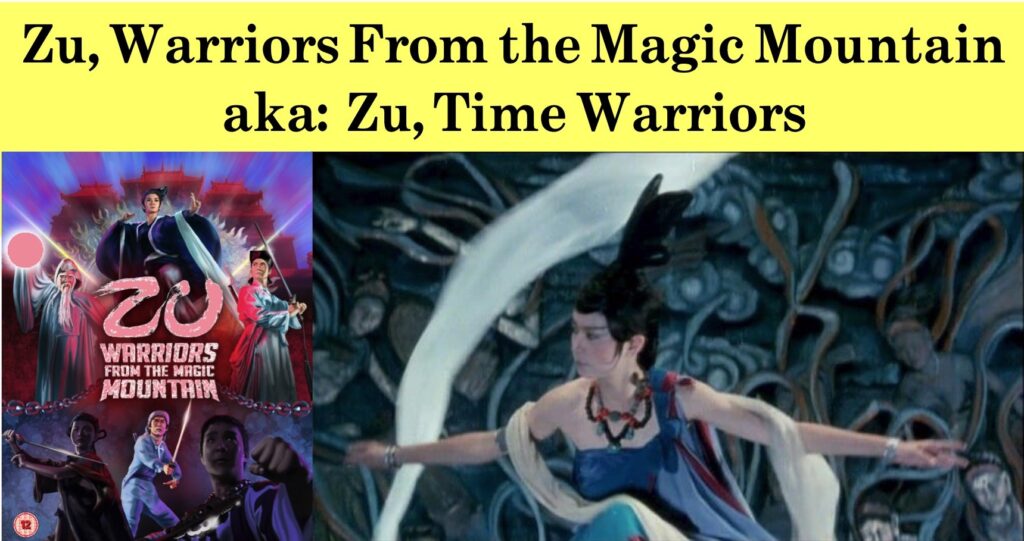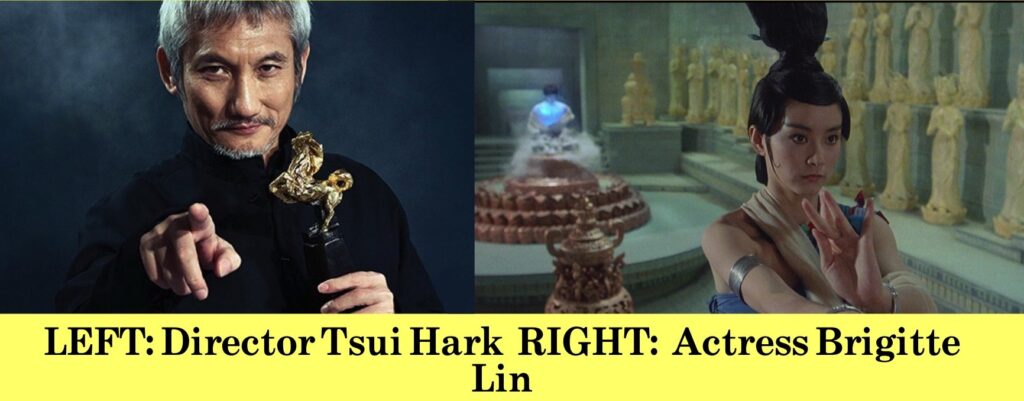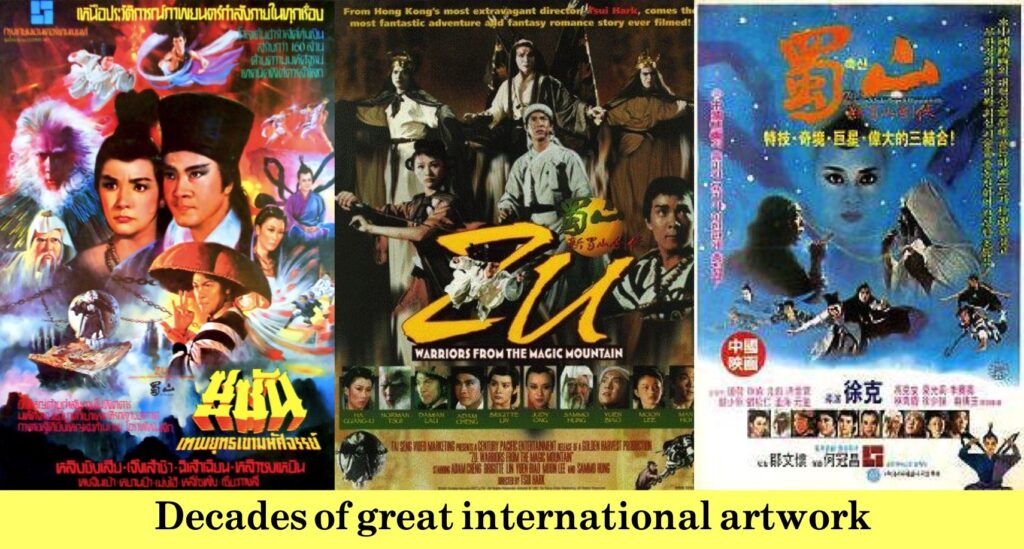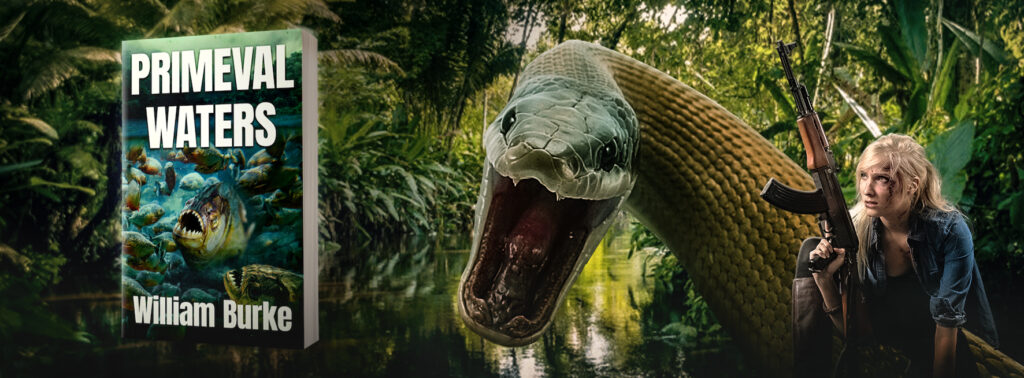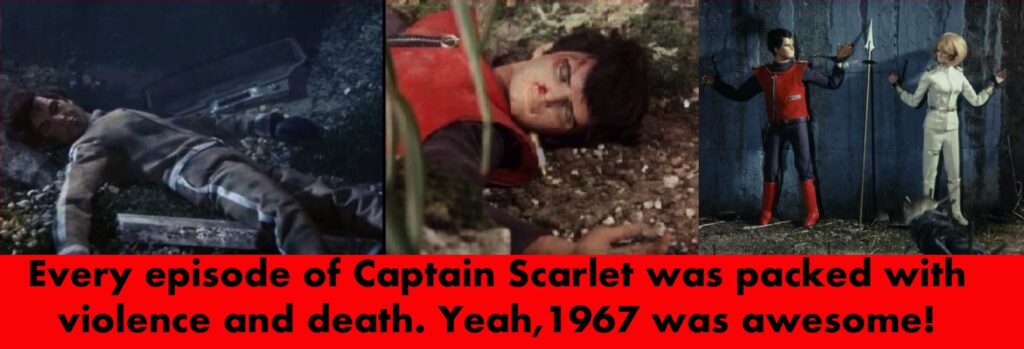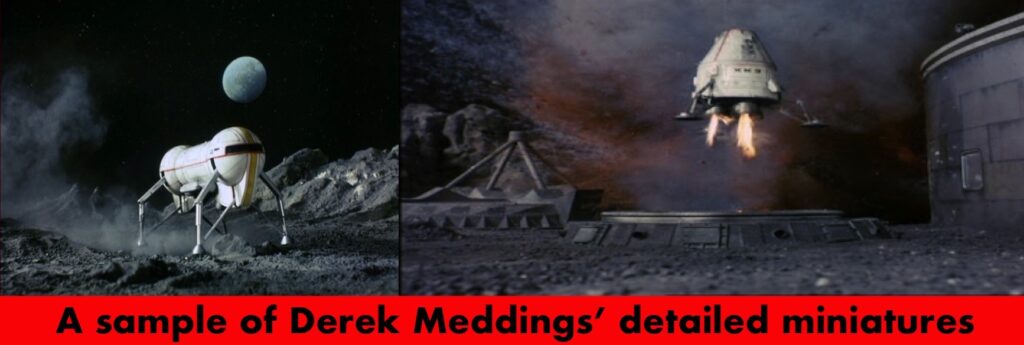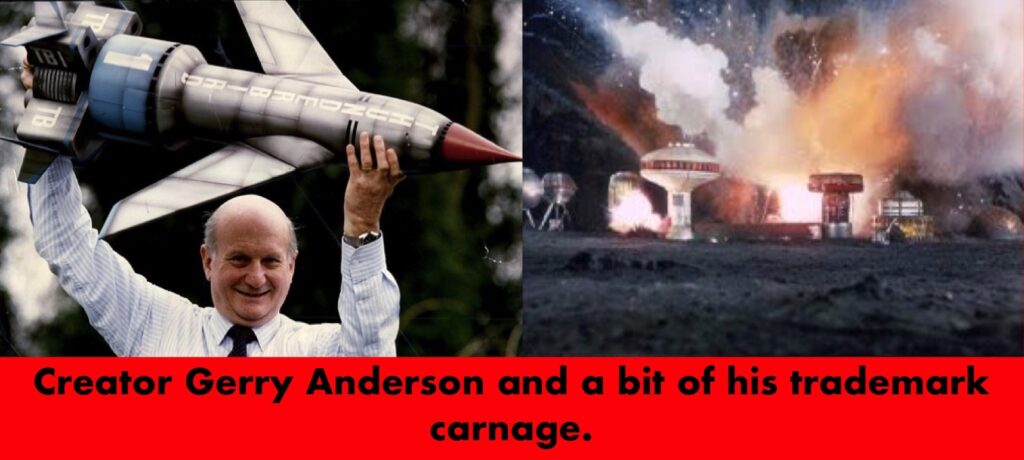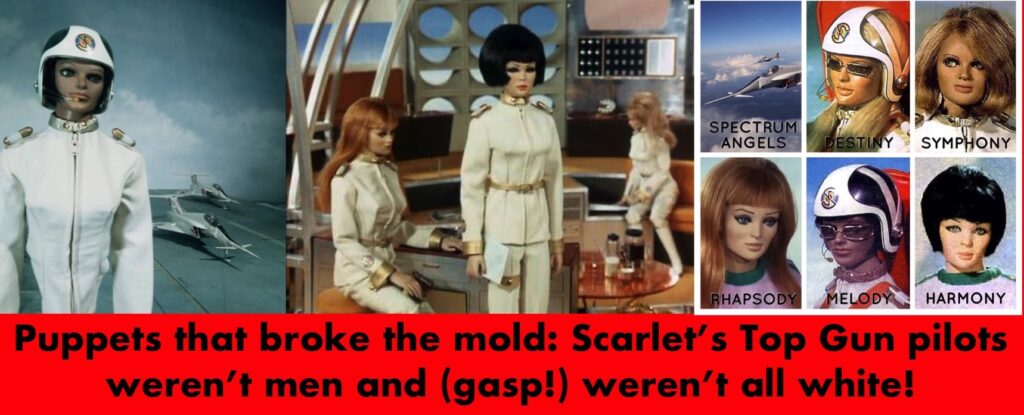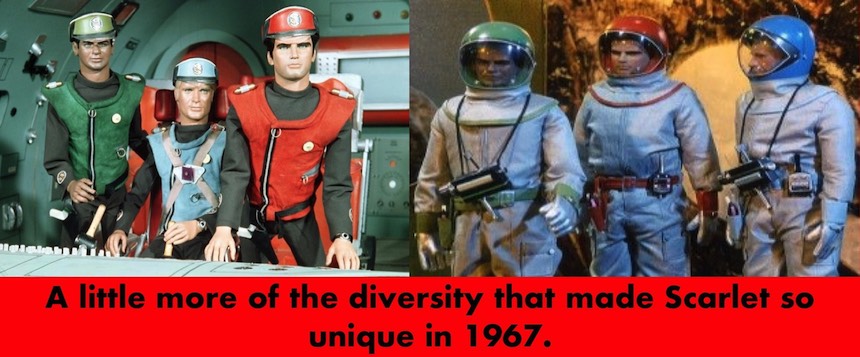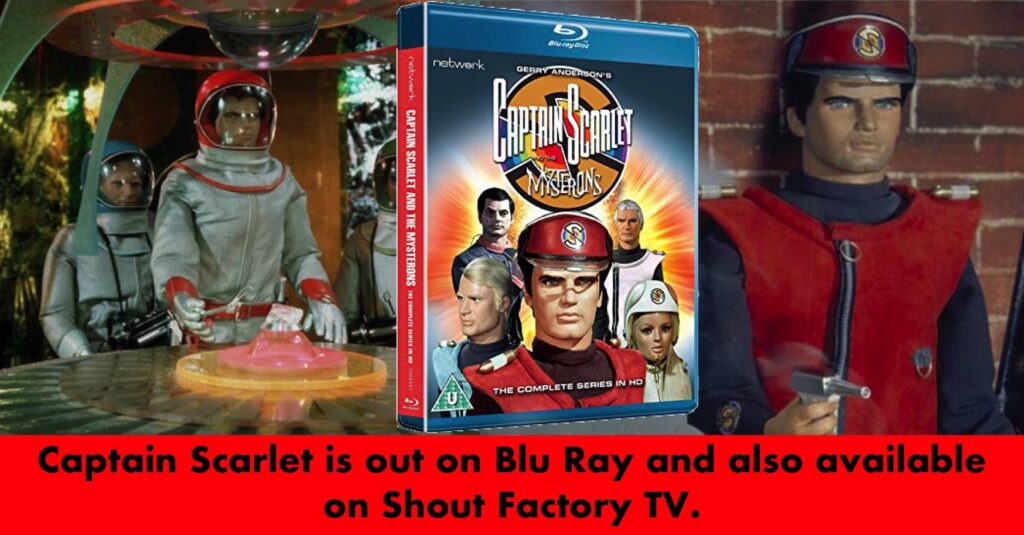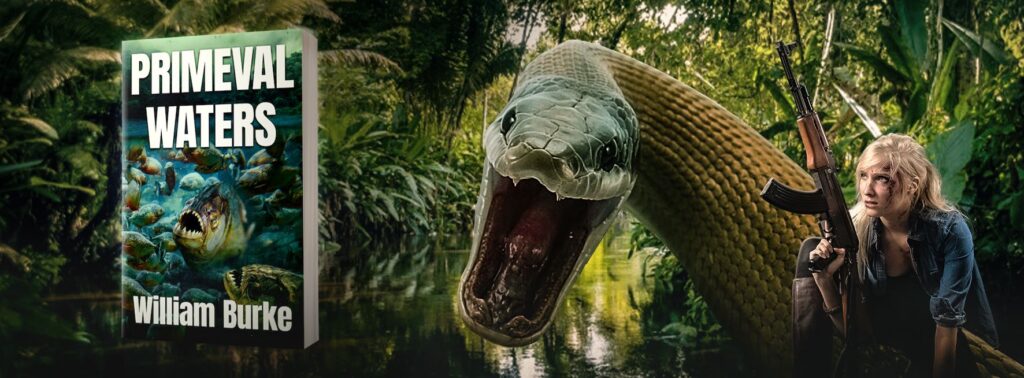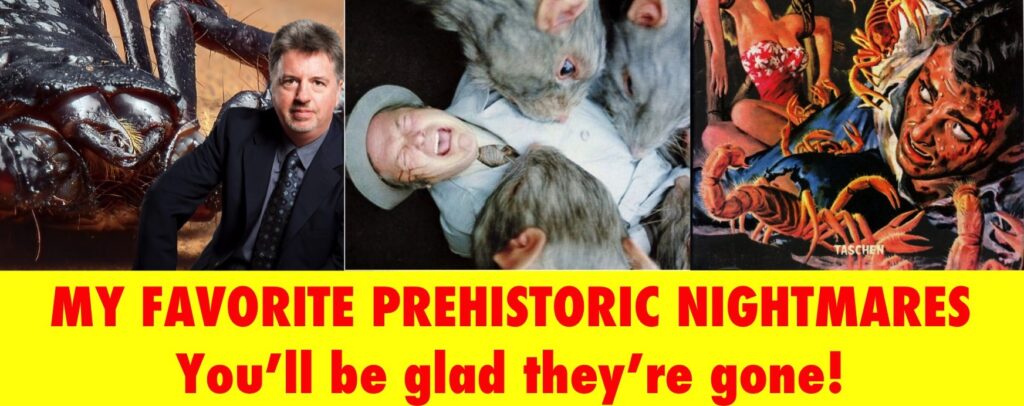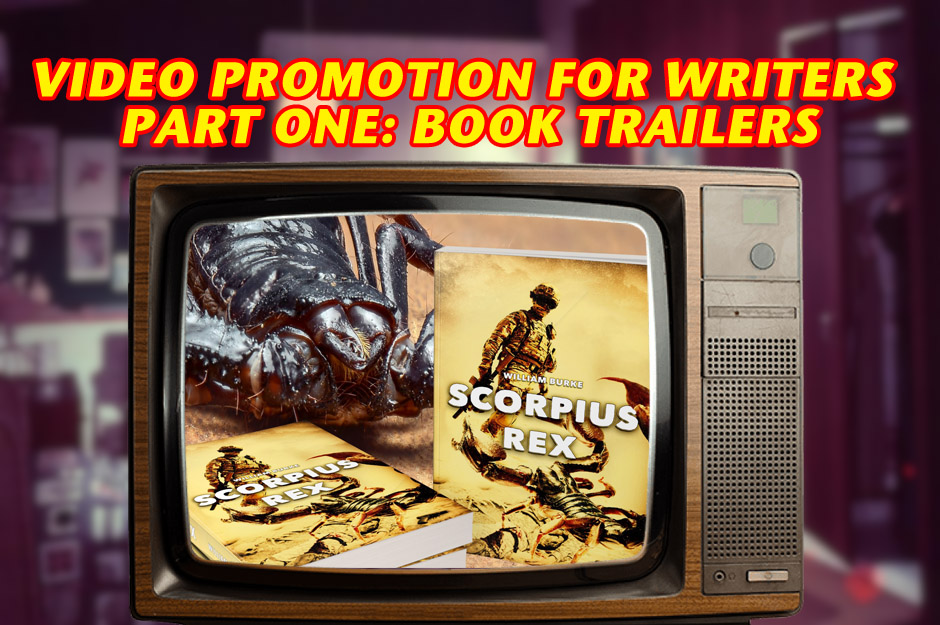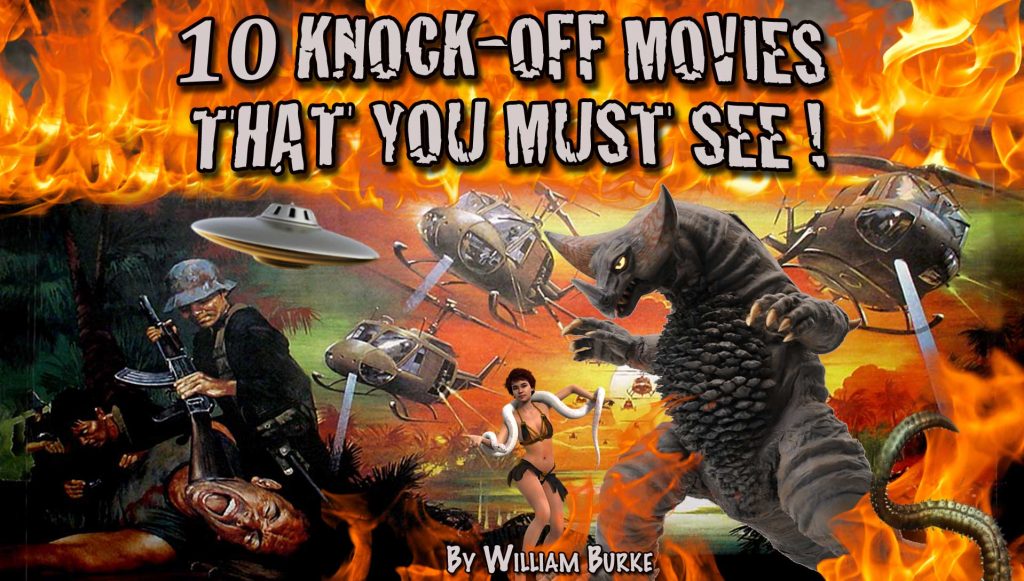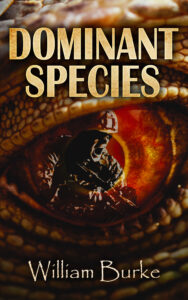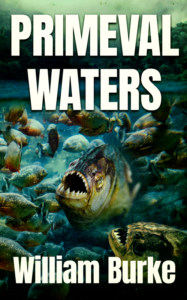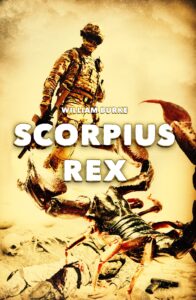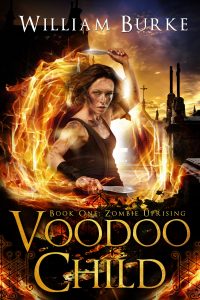SYNOPSIS: During the Tang Dynasty, an army deserter is saved from vampires by a mysterious swordsman, only to be enlisted in his hunt for the Blood Devil. They are aided by a whirlwind of celestial spirits and master swordsmen… OR, in the other version, a modern Hong Kong student, studying in England finds himself whisked back to ancient times, where he joins a cavalcade of master swordsmen and spirits to battle the world destroying blood monster.
Zu, Time Warriors is a re-edit of Zu, Warriors from the Magic Mountain, adding a forgettable modern prologue, while eliminating a great battle scene. Both are entertaining, though Magic Mountain is the more rewarding version.
During the early 90’s North America saw an influx of Hong Kong’s new wave of cinema. For film buffs who’d primarily known Hong Kong for its martial arts films this was a revelation. Discovering directors like John Woo and Ringo Lam added a glittering new jewel to our cinema geek crowns. My first exposure to the Hong Kong new wave was a Nuart Theater screening of A Chinese Ghost Story (1987), followed by a double bill of John Woo’s heroic bloodshed epic A Better Tomorrow (1986) and his even more bombastic sequel. The experience led me to scour up as many fourth generation VHS tapes as I could afford, devouring films like Lam’s City on Fire (1987) and Woo’s The Killer (1989). Among them was Tsui Hark’s 1986 historical action comedy, Peking Opera Blues, which became a personal favorite. Stylish and over the top barely described these alternate universe, totally non-Hollywood films.
John Woo became the poster boy for Hong Kong’s poetic excess. But his occasional producer, Tsui Hark, was often villainized for his hands-on approach, which some likened to a creative stranglehold. But Hark, who (fun fact) is actually Vietnamese, is a genuine talent that helped revolutionize Hong Kong cinema.
As a producer, Hark showed a gift for generating new genres or reinventing old ones. The success of A Better Tomorrow launched a tidal wave of Triad action films, while A Chinese Ghost Story spawned multiple sequels and dozens of imitators.
Hark took the director’s chair for 1983’s Zu: Warriors from the Magic Mountain. It was a risky choice as Zu falls into the wuxia fantasy film realm—a genre that had fallen out of favor. But Hark combined hyper camerawork, comic book color and frenzied editing, cranking them all up to eleven to create a unique film that enthralled Asian audiences.
Let me say two things right off. First, Zu (in either version) doesn’t make a whole lotta sense. Second, who cares! This film takes the term over the top to a gleeful extreme, combining martial arts, swordplay, ghosts, demons and romance. If Hark had thrown in some cross dressing he’d have hit every note in Hong Kong cinema’s cultural symphony. This isn’t a poetic wuxia film like 1993’s highly recommended Bride with the White Hair. Zu is just plain bonkers in the best way possible
Hark incorporates every special effect in the American Cinematographer’s Manual, including miniatures, foreground miniatures, reverse shots, slow motion, fast motion, diopters and wire work, while conjuring up a few new tricks. But, in 1983, Hong Kong still wasn’t able to handle high end compositing and matte shots. Fortunately, Hark’s frenzied, yet rhythmic, editing style never allows you to focus on any one shot long enough to pass judgement. You just sit back and let the chaotic fun wash over you.
The cast is great, with Yuen Biao (Iceman Cometh, 1989) as the heroic lead, along with future HK stars Sammo Hung and the beautiful Brigitte Lin as the Ice Queen. Interestingly, Lin went on to play the titular Bride with the White Hair.
The production design and cinematography are gorgeous, spotlighting just how far Hong Kong’s film industry had progressed in the ten years since 1973’s Enter the Dragon. That classic film had to make due with a single imported Panavision lens.
So, why isn’t Zu at the top of every film aficionados list of beloved Hong Kong films? Sadly, this epic was initially cursed with terrible VHS releases, reducing its saturated, comic book palate into smeared garbage. Its original English subtitles were borderline gibberish, rendering the plot incomprehensible—a fate many Hong Kong films suffered. This stemmed from English subtitles being a legal mandate foisted on Hong Kong filmmakers by the governing British. HK producers saw little value in these legally required subtitles, knowing that the American market would dub their films anyway. As a result, they were knocked off cheaply, with plenty of misspellings and local English phrases. But the Hong Kong new wave films weren’t dubbed for North America, so those nonsensical subtitles stayed. Some of my favorite terms were, “Give me face,” for showing respect and “crowdy” for anyplace crowded.
Thankfully, new releases of Zu have more accurate subtitling, allowing English speaking viewers to catch some of its subtle cultural elements. But, for your first viewing, I recommend turning on the English language track. I’m not being a cretin here, it’s merely that Zu’s Benzedrine fueled pace doesn’t allow time for reading.
Overall, Zu is a highly recommended piece of Hong Kong nostalgia. It’s the sword fighting, ghost battling, flying hero, equivalent of Evil Dead 2, and that’s a very good thing. Zu is also perfect with the audio turned off, accompanied by the soundtrack and edibles of your choice.
And if you’re looking for some action-packed monster mayhem, check out my new book Primeval Waters, from Severed Press. It’s an Amazon River hell cruise teeming with prehistoric monsters, modern pirates and ageless mysticism… and cannibals too! It is, of course, available on Amazon in paperback or Kindle.

